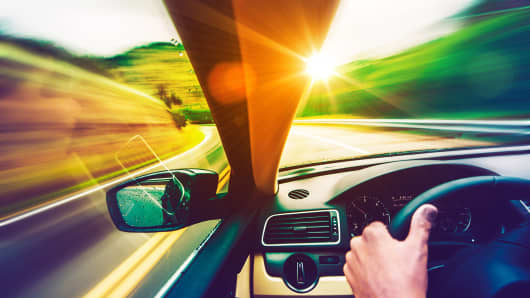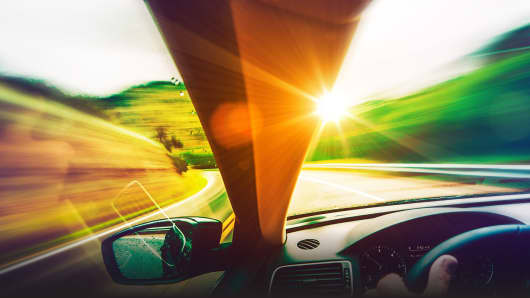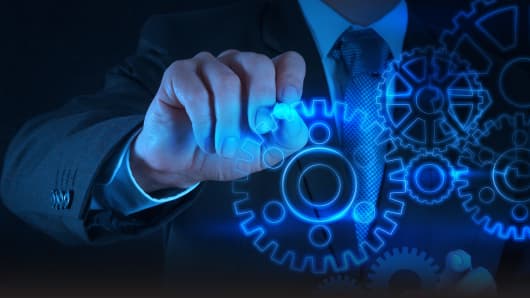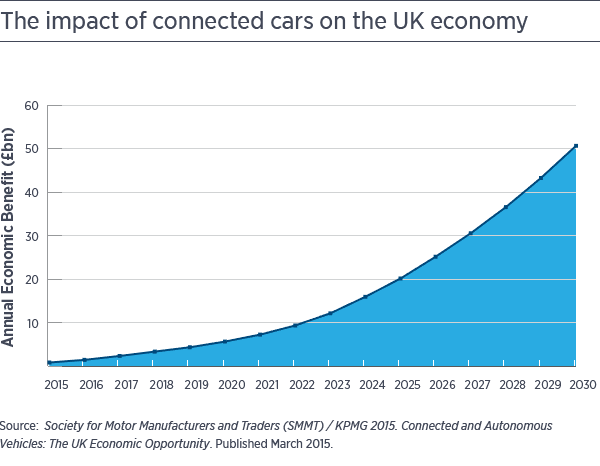"The Jetsons had them in the 1960s. They were the defining element of 'Knight Rider' in the 1980s: cars that drive themselves. By Hollywood standards, they are so normal we don't even notice them. What if you could buy one today?"
Road travel will change dramatically with the introduction of driverless cars – as will learning to drive. Motor industry leaders and technology experts tell us how.
Could we have zero deaths on our roads?
Cars that can think for themselves have clear advantages over flesh-and-blood drivers: They don't get drunk or drowsy, daydream or get distracted by mobile phones and squabbling kids. As the driver is taken out of the equation, so too will a large proportion of accidents. At least, that's what car manufacturers are aiming for, as they develop the next generation of intelligent vehicles. These vehicles, they hope, will deliver the automotive Holy Grail of "zero accidents, zero fatalities and zero emissions."
Worldwide, 1.24 million people die each year in road accidents and as many as 50 million are injured (WHO figures, 2013). Human error causes over 90 percent of these collisions. Driverless cars, which can sense other vehicles on the road as well as obstacles and lane markings, are already proving much safer than human-driven cars. In trials of Google's autonomous Prius fleet in Silicon Valley in California, the only accidents were caused by human error.
But let's back up a bit. How do driverless cars work? How are innovations like these designed? And how safe is it to put your life in the hands of an autonomous vehicle that makes all your decisions for you?
Driverless cars use a mix of GPS, cameras, complex scanners and sensors to detect vehicles, traffic signals, curbs, pedestrians and other obstacles. "A central computer system analyzes the data to control acceleration, steering and braking", says Olivier Sappin, VP of Transportation & Mobility at Dassault Systèmes - the software company whose 3DEXPERIENCE platform and industry solutions are used by motor manufacturers to design, produce and maintain driverless cars. The software can simulate different eventualities to ensure safety on the road - and the results can be incorporated into the design and production process.
As well as detecting their surroundings using ultra-sophisticated mapping systems, future cars will be able to communicate with each other, allowing as many cars as possible to fit on the roads. Connected vehicles will feature safety warnings that alert drivers of potentially dangerous conditions - impending collisions, icy roads and dangerous curves.
Experts say it's not the technology holding us back, but legal and practical issues such as who is responsible in the case of an accident, urban planning and the security of car computer systems. Once these details are worked out, and motor manufacturers have used sophisticated software tools to eliminate all potential problems, it won't be long until we're all a lot safer on the roads.
What will the car of the future look like?
The thrill of the open road
"Automated cars give passengers a sense of new-found freedom. Freedom to sit back and enjoy the open road, without being burdened with the responsibility of driving."
Cars have always been associated with freedom, but will traveling in autonomous cars take the thrill out of driving?
Not so, says Olivier Sappin of Dassault Systèmes, which is working with motor manufacturers to develop the cars of the future. "People who've tried prototype driverless cars report that they get used to the experience of not having to pay attention to the road fairly quickly. They feel safe - safe enough to use their mobile phones or tablets, to chat to other passengers, to relax, or work".
Other industry experts agree, "Some people just want transport to get to work. For them, as cities are getting bigger and traffic is getting worse, self-driving cars are freedom," says Pim van der Jagt, at Ford's research centre.
Those who enjoy the driving experience can still commute in the traditional way. "Some customers don't wish to give up the steering wheel altogether," an Audi spokesperson said. "They appreciate the prestige, comfort and sports appeal of automobiles."
But maybe that attitude will go the way of the horse and cart. The alternative will just become too attractive, too convenient, and too safe.
Connected profits
According to the Society for Motor Manufacturers and Trade (SMMT), countries like the US and UK are leading the way when it comes to road testing connected vehicles. It predicts that by 2030 connected cars will provide a £50 billion boost to the UK economy alone.











